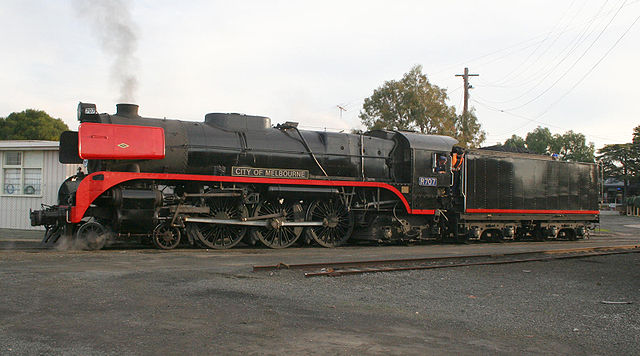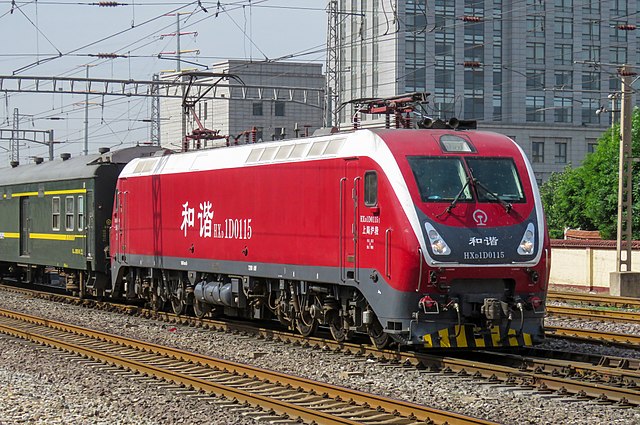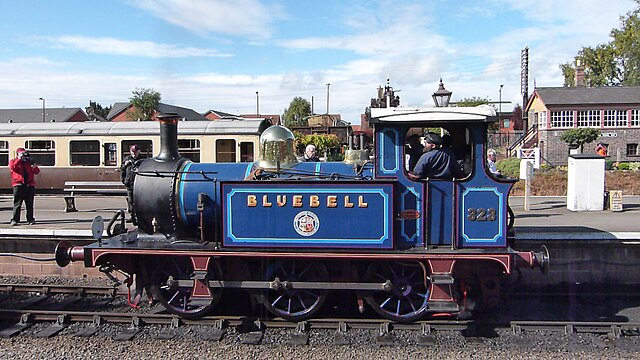A gravity railroad or gravity railway is a railroad on a slope that allows cars carrying minerals or passengers to coast down the slope by the force of gravity alone. The speed of the cars is controlled by a braking mechanism on one or more cars on the train. The cars are then hauled back up the slope using animal power, a locomotive or a stationary engine and a cable, a chain or one or more wide, flat iron bands. A much later example in California used 4 ft 8+1⁄2 in standard gauge steam engines to pull gravity cars back to the summit of Mt. Tamalpais.
Gravity car no. 21 on the Mt. Tamalpais and Muir Woods Scenic Rwy c. 1915.
A locomotive or engine is a rail transport vehicle that provides the motive power for a train. If a locomotive is capable of carrying a payload, it is usually rather referred to as a multiple unit, motor coach, railcar or power car; the use of these self-propelled vehicles is increasingly common for passenger trains, but rare for freight trains.
Pacific National diesel locomotives in Australia showing three body types, cab unit (front), hood unit (middle) and box cab (rear)
A Victorian Railways R class steam locomotive in Australia
A China Railways HXD1D electric locomotive in China
Wainwright SECR Class P on the Bluebell Railway, England





